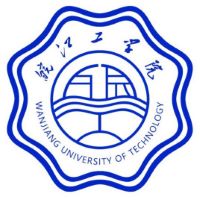Wanjiang Institute of Technology is located in Ma'anshan City, Anhui Province, a national civilized city and a place where "poetry immortals" linger. It enjoys the reputation of "ecological paradise and smart manufacturing city". It is adjacent to the two provincial capitals of Nanjing and Hefei, and has obvious location advantages. The school was formerly Wentian College of Hohai University. It was approved by the Ministry of Education in 2008 and was converted into an independent private ordinary undergraduate college in 2018 and renamed "Wanjiang Institute of Technology". The school currently has two campuses, Huolishan and Zhengpugang, with a total area of 1.1226 million m2 and a school building area of 559,300 m2. There are 16,956 full-time undergraduate students. There are 1,054 faculty and staff, including 839 full-time teachers, 741 teachers with doctoral and master's degrees, accounting for 88.32% of full-time teachers; 385 teachers with deputy senior professional and technical positions or above, accounting for 45.89% of full-time teachers; 178 "dual-qualified" teachers, accounting for 21.22% of full-time teachers. There are 1 Yangtze River Scholar, 12 second-level professors, 11 provincial teaching teams, 9 provincial teaching masters, and 21 provincial new teachers. The school has 11 teaching units, including the School of Water Conservancy Engineering, the School of Civil Engineering, the School of Electrical Engineering, the School of Computer and Artificial Intelligence, the School of Mechanical Engineering, the School of Finance and Economics, the School of Management, the School of Art and Design, the Basic Teaching Department, the School of Marxism, and the School of Innovation and Industrial Work. The school adheres to the orientation of serving the local area to cultivate applied talents and continuously optimizes the professional layout. There are 34 majors for enrollment, and an applied professional structure with engineering as the main subject, water conservancy as the feature, and coordinated development of multiple disciplines such as engineering, economics, management, art, and agriculture has been formed. There are 26 key professional construction projects at the provincial level and above, including 1 national first-class undergraduate professional construction site and 6 provincial first-class undergraduate professional construction sites, which have built a first-class professional construction system at the national-provincial-school levels. There are 4 first-class undergraduate talent demonstration and leading bases, 4 characteristic majors, 2 pilot projects for comprehensive professional reform, 5 excellent talent education and training plans, and 4 majors under the Anhui Province "Revitalization Plan" construction. The school attaches great importance to scientific research and strives to build a scientific research platform. The school currently has one provincial "postdoctoral research workstation"; one Hohai University postgraduate training base; 85 laboratories of various types, including one key laboratory of the Provincial Department of Education, one municipal key laboratory, and six municipal engineering technology research centers; 10 school-based research institutes, one water conservancy planning and design institute, and one high-tech research institute. It has presided over 607 vertical scientific research projects of various levels and types, including 259 provincial projects and 348 municipal and school projects; published 117 books and textbooks; published 1,579 academic papers, including 285 SCI, EI, and CSSCI indexed papers; obtained 472 accepted and authorized patents, including 208 invention patents; and the project funds entrusted by enterprises and institutions are more than 93 million yuan. The school is the first batch of "social science knowledge popularization bases" in Ma'anshan City. The school attaches great importance to the cultivation of students' practical ability, strengthens the leading role of teaching research in teaching reform and the role of scientific research in promoting teaching. Since its establishment, students have participated in various provincial, national and international competitions and won more than 1,790 provincial and above awards, including 361 national awards and 38 international awards. The school attaches great importance to the cultivation of students' innovative and entrepreneurial qualities. It has a special innovation and entrepreneurship college with entrepreneurial simulation training rooms and incubation rooms, etc., and an average of more than 5,000 students participate in innovation practice competitions each year. The school attaches importance to the cultivation of high-quality application-oriented talents, carries out "engineer college" education, implements "excellent talent training plan", "Wentian class", "Huafu engineer class" and other characteristic education projects, and has achieved remarkable educational and teaching results. In the 15 years since its establishment, the school has provided nearly 37,000 qualified undergraduate graduates to the society. The admission rate of graduates for postgraduate entrance examinations has been close to 15% in recent years, and it was 13.34% in 2023. The employment rate of graduates in previous years was around 95%, and it was 95.99% in 2023. In the "2023 Soft Science China Private University Rankings", Wanjiang Institute of Technology ranked 30th in China's private universities (main list) with 69.2 points and 1st in Anhui Province. The school's standardized teaching, strict management, high-quality services and colorful campus culture have won unanimous praise from students, parents and the community. The school's development has entered a new stage of "engineering-oriented, water conservancy-featured, multi-disciplinary coordinated development, and high-quality development".
-

Tsinghua University
-

Peking University
-

Fudan University
-

Wuhan University
-

Zhejiang University
-

Nanjing University
-

Sun Yat-sen University
-

Tongji University
-

Renmin University of China
-

Jahrom University of Medical Sciences
-

Mesoamerican University
-

Istmo University
-

Mariano Galvez University of Guatemala
-

Regional University of Guatemala
-

Galileo University
-

Francisco Marroquín University
-

Rafael Landívar University
-

University of the Valley of Guatemala
-

University of San Carlos of Guatemala
-

Technological Institute of Tlaxcala Plateau
-

Golfo University
-

Technological University of South Sonora
-

Technological University of Huejotzingo
-

Tizimín Institute of Technology
-

Chilpancingo Institute of Technology

